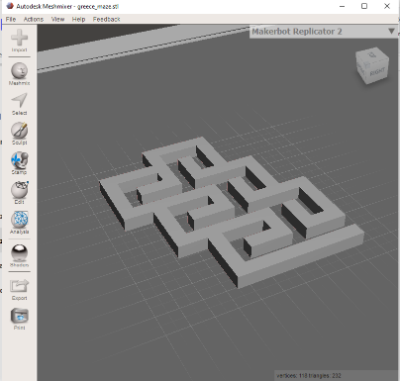Why 3D printing in the classroom?

Some teachers cannot imagine using 3D printers in the classroom. Reasons given include lack of time or cost problems (Pielsticker & Witzke, 2017). For this reason, we would like to provide ideas and lesson plans that can be used directly by teachers.
Nowadays, it is important to use technology in schools to support and motivate students in their learning. According to Witzke and Hoffart (2018), 3D printing is a great tool that can be used in schools in different ways. They mention three different ways to use it in schools.
- First, there is a large amount of designed materials on the web that can be printed directly to be used in school.
- Secondly, teachers can develop individual materials especially for the students.
- Thirdly, students can model and print their own ideas, learning how to use CAD programmes.
- It also trains spatial imagination and self-directed learning can increase motivation.